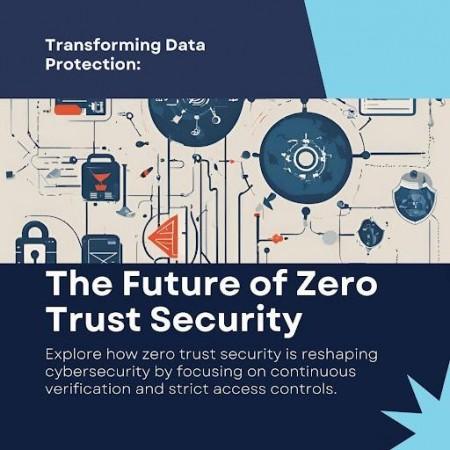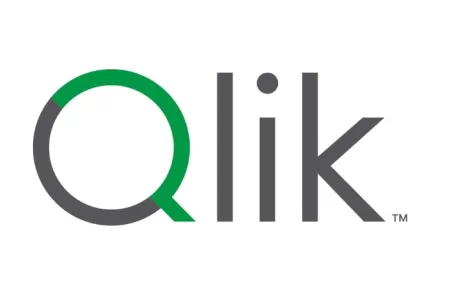Revolutionizing Data Protection: The Promise of Zero Trust Security
3 min read
In the digital era, businesses shifting to cloud services expand their attack surfaces, making traditional security measures ineffective. IBM reports a 2021 data breach cost of $4.24 million, up 10% from 2019, highlighting the failure of perimeter-based models. Zero Trust’s “never trust, always verify” philosophy treats all users, devices, and data as potential threats, enhancing security. Naga Vinod Duggirala explores the groundbreaking paradigm of Zero Trust security, emphasizing its transformative potential in modern data protection strategies.
The Core Principles of Zero Trust Security
Continuous verification requires constant authentication of all users and devices, regardless of location. Deloitte reports it halves incident response time, and Gartner predicts 60% of enterprises will replace VPNs with Zero Trust solutions by 2023, ensuring access through real-time risk analysis.
Additionally, least privilege access ensures that users and devices only have necessary permissions. BeyondTrust’s survey shows that 79% of organizations value this approach for reducing cyber risks. It limits damage from compromised accounts or insider threats. Varonis reports that 58% of companies let all employees access over 100,000 files, highlighting the need for strict access control.
Micro-segmentation divides networks into smaller, isolated segments. Forrester reports it can reduce data breach costs by 29%. Illumio’s study shows companies using micro-segmentation detect and contain breaches 50% faster, preventing lateral attacker movement and minimizing breach impact.
Implementing the least privilege principle is crucial, extending to granular authorization, including encryption/decryption access control and cryptographic key access. Defining which entities can access keys for cryptographic operations is essential. Incorporating cryptographic key access into Zero Trust Security significantly enhances security, elevating protection to the next level by ensuring strict control over sensitive data and operations.
Benefits of Zero Trust Security
Zero Trust security enhances security, compliance, and operational efficiency. Forrester reports organizations adopting Zero Trust have 50% fewer data breaches. Okta’s report shows a 275% ROI over three years for Zero Trust adopters, thanks to reduced breach risks and increased efficiencies.
Zero Trust aids compliance with GDPR and HIPAA via fine-grained access controls and audit trails. Cybersecurity Insiders reports that 72% of adopters see improved compliance, while Coalfire finds they meet PCI DSS and NIST SP 800-53 standards 40% faster than traditional models.
Increased visibility is a key advantage of Zero Trust, allowing organizations to gain complete insight into user and device activities. Gartner’s research shows that companies with Zero Trust detect and resolve security incidents 63% faster. Zscaler’s survey indicates that 62% report improved activity insights, enabling quicker issue resolution.
Beyond these benefits, Zero Trust streamlines operations.Cisco reports a 60% reduction in onboarding time, and Microsoft notes a 50% drop in access-related help desk tickets. This allows IT to focus on strategic projects, significantly boosting organizational performance and resilience.
Challenges and Implementation
Transitioning to a Zero Trust architecture presents significant challenges, including complexity, cost, human error, and integration with legacy systems. The Cloud Security Alliance reports that 59% of organizations cite complexity as the primary hurdle. Gartner estimates the average implementation cost at $1.2 million per 1,000 employees, highlighting the need for substantial investment in new technologies and employee training. Integration with existing systems also poses difficulties, with Fortinet reporting that 67% of companies struggle in this area.
A Phased Approach to Implementation
Organizations should adopt a phased approach to implement Zero Trust effectively. The National Institute of Standards and Technology (NIST) suggests a five-step process: identify, protect, detect, act, and recover. Collaboration among IT, security, and business teams is crucial, with Deloitte noting an 85% increase in success likelihood. Begin with a comprehensive inventory of all assets, followed by prioritization, robust authentication measures, network segmentation, and continuous monitoring to detect and prevent threats.
Overall, Zero Trust security is crucial for evolving threats and complex IT environments. By following its core principles and phased implementation, organizations can significantly enhance security, reduce breach risks, and ensure compliance. Despite initial challenges, the long-term benefits of Zero Trust outweigh the costs, making it essential for modern cybersecurity strategies.
